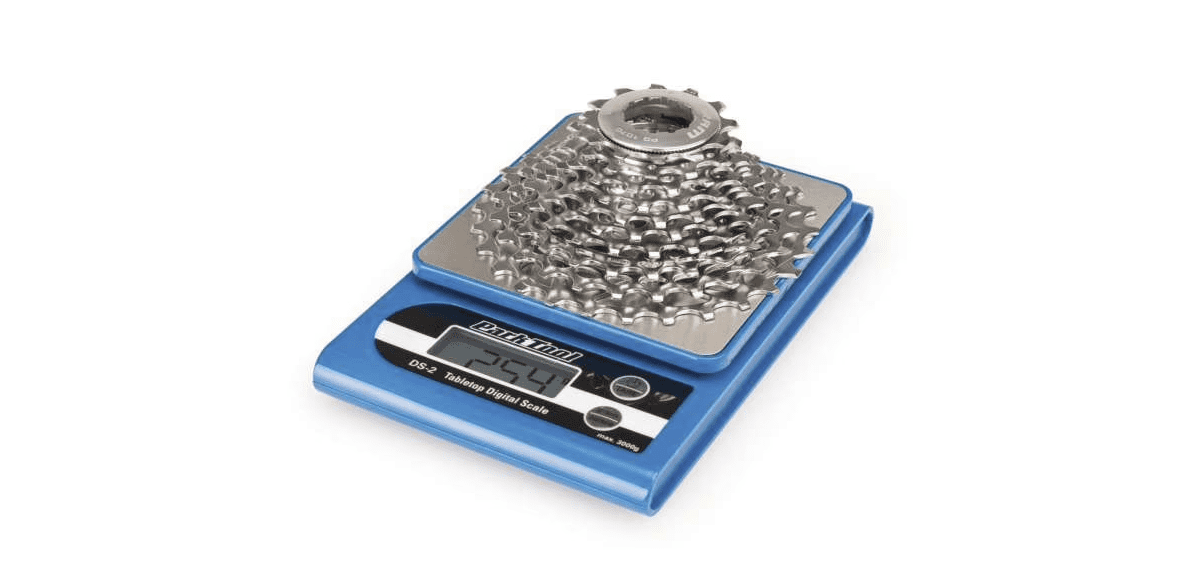How light can a bicycle be? The UCI has set a minimum weight for racing bikes in international bicycle races. If one of the racing machines weighs less than 6.8kg, it is not allowed to participate in competitions. Why and how sensible this regulation is, is hotly debated. But what is interesting here is: Bicycles can be even lighter than 6.8kg. And that's truly not much. But what does a particularly light bicycle bring? And how does it become so light? Find out here!
The major bicycle manufacturers have been engaged in a tough head-to-head race for years over who builds the lightest bicycle. Usually, racing bikes are the focus in weight comparisons, as every gram is traditionally haggled over here. But it doesn't really matter whether it's a racing bike, a mountain bike, a gravel bike, a city bike, or a trekking bike on the shopping list, more and more cyclists are wishing for a particularly light bicycle. Especially the emergence of the "Light E-Bikes" has reignited the discussion about the ideal weight of a bicycle. But why?
Why should a bicycle be light?
A light bicycle has various advantages:
- It is easier to set in motion. That means, it gets going with less effort on your part.
- If you like to travel quickly, a light bicycle is also practical, because you can get it up to speed with less legwork.
- Especially on inclines, the weight is noticeable, you literally have it significantly easier uphill if your bicycle weighs less.
- But not only while you're sitting on it, a light bike is a lot of fun. It is easier to push, lift, and load, and this aspect is particularly interesting for trekking cyclists and everyday riders.
There are studies and various experiments that examine the relationship between weight, speed, incline, and air resistance. Since they experiment with various parameters, they are difficult to compare. Sometimes there is more incline, sometimes a heavier rider, sometimes a lighter bicycle, and so on. Moreover, they usually take place in the context of professional sports and are therefore of little relevance to us Wald-and-meadow bikers. As a result, you can read, for example, that about 1kg more on the mountain makes a cyclist about 1% slower, or how many seconds of time gain you can achieve with 590 grams less. In one thing, the test results agree: The heavier the bicycle + rider, the more difficult it becomes. Conversely:
|
A light bicycle makes your life easier! |
When is a bicycle considered "light"?
When exactly a bicycle is light cannot be generally determined, it depends, among other things, on the type of bicycle.

"Once without everything, please!". A singlespeed has a lot of style, little equipment, and low weight. Image © Creme Cycles
You have to consider this weight for the bicycle
- City bike: A fully equipped city bike with a low entry, fenders, chain cover, and so on can weigh almost 20 kg. Light city bikes, singlespeeds and fixies for example, weigh about half, so +/- 10 kg, often lacking the usual comfort equipment with fenders and lighting system!
- Trekking bike: Trekking bikes traditionally have full equipment. They are also built particularly robustly so that they can roll reliably on longer bike tours and changing terrain. However, since long distances with a heavy bike are tiring, weight is still saved here, and a trekking bike can be as light as 12 kilos. About 18 kilos is the upper limit here.
- MTB Hardtail: Hardtails are the lighter mountain bikes, for an aluminum bike you have to estimate about 14 to 15 kilos, with a carbon frame it becomes significantly lighter at around 8 kilograms.
- MTB Fully: If you want to ride a fully, you have about 12 to 14 kilos of bike in store. Super-light carbon bikes weigh a little more than 10kg but are also correspondingly expensive.
- Racing bike: The lower limit mentioned at the beginning, which the UCI allows for racing bikes, is a good guideline. Many racing bikes weigh more, between 7 and 10 kilograms are normal. But some bikes are even lighter!
- Gravel Bike: Gravel bikes originate from racing bikes, but the relationship with touring bikes is also noticeable. In terms of weight, the popular gravel bikes are right in the middle, weighing between 8 and 14 kilograms. The equipment makes the difference here.
- E-Bikes: E-bikes play in a completely different weight class, but we still want to mention them for comparison. Particularly robust and fully equipped models are close to the 30 kg mark, extra light versions can even fall below the 15-kilo limit.
|
Generally, a bio-bike under 15 kilos is considered light. If it weighs under 10 kilograms, it is particularly light. For an e-bike, a particularly light bike is considered to weigh under 20 kilos. |
However, these limits are flexible, they vary for example from manufacturer to manufacturer, from one model year to the next, with different equipment options and so on. Also important: the frame and wheel size! Often an average value is given, so a model in size M is weighed and this weight is given for all sizes. Often bicycles are also weighed without pedals or optional equipment such as mudguards, so the bike that arrives at your place might be slightly heavier – or even lighter.

Wide tires, potent suspension, lots of travel and plenty of fun... but a fully is not light! Image © NS Bikes
How to make a bike light
How does a bike become lighter? This question is probably asked daily by manufacturers of bike frames and components. Especially in the road bike sector and around mountain bikes, lighter components are constantly being released.
There are three approaches to putting a bike on a diet:
- A light bike frame
- Light components
- What can be left out?
Steel, aluminum, carbon: Light, lighter, lightest!
You can pay attention right at the purchase to find a particularly light bike. It then consists of a light frame material and as light components as possible. In the past, bicycles were made of steel tubes and were therefore very durable (and damages could be welded!), but they were also very heavy. It is understandable that bike builders looked for other basic materials. From the 1970s, the significantly lighter aluminum bike made a splash until it was replaced by carbon as the frame material of choice in the 90s.
The frame material has a major impact on the weight of a bike. It also affects the riding characteristics and durability, and last but not least, the price. Here is an overview:
The stable heavyweight: A bike with a steel frame
Bicycles with steel frames were the starting point, they allowed the bicycle to become suitable for the masses. Steel tubes are inexpensive, easy to shape, and very durable – perfect for building a bicycle. They are also not too stiff, so even an unsprung bicycle is quite comfortable, the material brings some "self-damping". But lightweight? Unfortunately not. That's why most bicycles today are made of aluminum. But steel bicycles still exist, and not just in cult vintage bikes! Anyone who wants to buy a particularly robust bicycle buys steel, especially style-conscious fixies and single-speed bikes, urban bikes, gravel bikes, and pack animals like expedition bikes are built on a steel frame.
A bicycle with a steel frame:
- is heavy
- is very robust and durable
- very inexpensive
- allows for slim tube diameters
- has slight self-damping

A typical steel bike with particularly slim tube diameters. Image © 6KU
Light and inexpensive: the aluminum bicycle
Almost every bicycle today is made of aluminum, because aluminum is light, durable, and scores with good stiffness values. It remains robust even under high stress, and it is not susceptible to weather influences and moisture. An optimal alloy for bicycle construction. It is also inexpensive and easy to process, making aluminum perfect for the mass production of excellent everyday and sports bicycles. From a distance, you can recognize aluminum bikes by their larger tube diameters compared to steel bikes, so the frame has enough stability. On the other hand, aluminum allows more leeway in frame design.
A bicycle with an aluminum frame:
- is light
- quite durable
- easy to shape
- inexpensive
Carbon bikes are the lightest
The lightest bikes on the market currently have carbon frames, even components like handlebars or seat posts can be made of carbon, they are torsionally stiff and extremely lightweight. Carbon fibers give bicycle designers free rein in designing the frames, even an aerodynamically optimized shape is no problem.
The disadvantage: carbon is not quite inexpensive. If you click on the most expensive bicycles and bicycle parts in the online shop, you will certainly end up with carbon. Carbon has another disadvantage: Manufacturing allows for very durable carbon frames today, but they still cannot withstand localized pressure or impacts.
Carbon is:
- light
- torsionally stiff
- freely formable
- expensive
- can break
Titanium, wood, and bamboo
Usually, the talk is about the "big three", aluminum, steel, and carbon. But there is another material from which bicycle dreams are made: titanium. Titanium is light, flexible, and extremely durable – so why aren't all bicycles made of titanium? Simply put: titanium is extremely expensive, most bikers simply don't want to dig that deep into their pockets.
Renewable raw materials are something fine, and so there is eager experimentation with them in bicycle construction. But they not only regrow, compared to metals, both materials are also quite light. Sounds like a smart concept! There are already a few manufacturers who have developed a wood bicycle or a frame made of bamboo to series production, but so far these bikes are still rather a niche phenomenon.
|
Carbon |
Aluminum |
Steel |
|
light |
lighter |
heavy |
|
stiff frame construction |
stiff frame construction possible |
slight self-damping |
|
free frame construction |
easily moldable |
works best as a tube |
|
requires larger tube diameters |
narrow tube diameters possible |
|
|
expensive |
affordable |
affordable |
|
sensitive |
durable |
durable |
Lightweight Components
Just under 1000 grams vs. 260 grams – a significant difference for very similar bicycle parts! Especially when you consider that you have to mount this weight twice on the bike, as it is about tires. An average MTB studded tire weighs around 800 grams, often even more, while a road bike slick tire weighs only 260 grams. Okay, the comparison might be a bit off since you can't just swap the tires, but there are lighter and heavier versions for many bicycle parts.
Another example: In recent years, an innovation has caused a shift in the components market: 1x drivetrains are on the rise, among other reasons because they are lighter than 2x or even 3x drivetrains.
For years, ever lighter components have been developed, which are initially found in the top segment but become mass-produced after a few model years. The big exception is the brakes. Disc brakes are heavier than rim brakes, but since they decelerate better, they are now the standard.
The weight of bicycle parts can vary greatly. Affordable parts are usually heavier than high-end components. Lightweight trekking or road bike parts are lighter than robust off-road equipment. Carbon handlebars are lighter than aluminum or steel handlebars. Replacing bicycle parts can make a big difference and is therefore an essential part of weight tuning.
By choosing particularly lightweight bicycle parts, you can make your bike significantly lighter.
What can you do without to make your bike light?
Everything that is not absolutely necessary can be removed. Especially on racing bikes, this motto is the program. Sporty bikes are usually on the road without components and attachments like mudguards. That saves a lot of weight. It's a bummer if you get caught in the rain. Another part that is very practical in everyday life, but is frowned upon by sporty riders: the luggage rack. And so you can unscrew part by part until you have more or less reached the fixie. That's not particularly safe and not allowed in public traffic, but definitely light!
Many problem areas on heavy bicycles mainly serve comfort. Suspension forks, suspension seat posts, thick, soft saddles, wider tires, and so on cushion uneven surfaces. This makes the ride smoother, but the bike is then heavier.
 Do you really need that? Less comfort makes a bike light! Image © Liv
Do you really need that? Less comfort makes a bike light! Image © Liv
A lightweight bike for women? Does that exist?
Of course, there are particularly lightweight bicycles for women as well, but the rumor that women's bikes are particularly heavy persists stubbornly. This may be because a "women's bike" in many minds is still a city bike with a low entry and full equipment. With features like a thick bell, a second luggage rack on the handlebars, or a heavy hub gear, the two-wheeler weighs significantly more.
Today, however, particularly lightweight bicycles are also built for women, but unfortunately, it rarely works in combination with the low entry. Among hardtails and city bikes with trapezoidal frames, there are some models that weigh less than 15 kilograms.
The frame shape makes the "women's bike" heavier!
Why does the weight have something to do with the low entry? Quite simply... To keep a bicycle frame in this shape stable, it needs a bit more material, while a diamond frame, thanks to the high top tube, remains robust and durable even with thin-walled and slimmer tubes.

A glance and you recognize the problem... such a women's bike is beautiful. But light? Unfortunately not, because it has a lot of frames. Image © Creme Cycles
Which bicycle is particularly light?
If you want to buy a particularly lightweight bicycle, you should look among the racing bikes, as they are traditionally the lightest. Due to the special riding position, however, a real racing bike is certainly not suitable for everyone. Their closest relatives, gravel bikes , are usually equipped to be more off-road capable and therefore also heavier. Even among MTB Hardtails, there are particularly lightweight models today, while the suspension of a Fully always makes it significantly heavier. In general, weight is also saved on MTBs, with "Airtime" being the keyword here. But since the bikes still have to withstand a lot, a certain weight cannot be undercut, otherwise stability suffers.
Weight-wise, the frontrunners are Citybikes, while when buying a Trekkingbike, you have the choice, as there are particularly lightweight bicycles, but also real heavyweights that are particularly stable.





